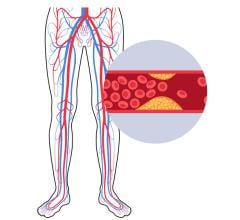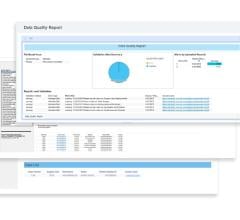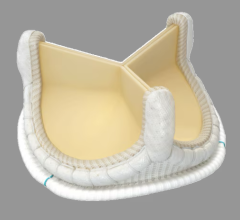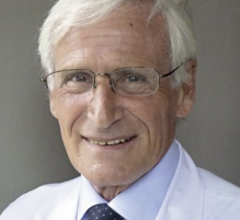
October 4, 2011 – Abbott today said it began enrolling U.S. patients in the EXCEL (Evaluation of Xience Prime or Xience V versus Coronary Artery Bypass Graft (CABG) Surgery for Effectiveness of Left Main Revascularization) trial. EXCEL is a global, prospective, multi-center, randomized trial to assess the safety and efficacy of the Xience Prime/Xience V everolimus-eluting coronary stent systems, compared to CABG in select patients with unprotected left main coronary artery disease. The first U.S. patient was enrolled into the EXCEL trial at Turkey Creek Medical Center in Knoxville, Tenn., by Michael L. Maggart, M.D., cardiothoracic surgeon, and Malcolm T. Foster, M.D., interventional cardiologist.
Left main disease is a high-risk subset of coronary artery disease involving blockage of the left main coronary artery, which branches off the aorta to provide blood flow to the left ventricle of the heart. Surgery traditionally has been the standard treatment for left main disease, with coronary stenting reserved only for patients at high risk for surgery who are "protected" by a previous bypass graft to at least one of the two major coronary arteries that branch off the left main artery. The EXCEL trial will evaluate unprotected patients with left main disease who have not received grafts to these arteries to determine whether coronary stenting can be an alternative to bypass surgery. The trial is being led by a multi-disciplinary team of physician specialists representing both surgeons and cardiologists.
"With the advancement of technology and expertise, coronary stenting might have potential as an alternative to coronary bypass surgery for select patients with left main disease," said Joseph Sabik, M.D., chairman, department of thoracic and cardiovascular surgery, Cleveland Clinic, and a principal investigator of the EXCEL trial. "Although surgery has traditionally been the standard of care in patients with left main disease, the goal of the EXCEL trial is to evaluate Xience as a potential new treatment option for select patients with this high-risk condition."
"EXCEL will examine the differences between stenting and surgery in a select patient population," said Gregg W. Stone, M.D., professor of medicine at Columbia University Medical Center and New York-Presbyterian Hospital and a principal investigator of the EXCEL trial. "The EXCEL trial, which is the largest study to date to randomize patients with left main disease to either coronary stenting or surgery, is designed to answer whether one of these therapies is preferred in these high-risk patients, thus helping physicians determine appropriate treatment choices in patients with left main disease."
The EXCEL trial will enroll more than 2,600 patients at up to 165 medical centers in 18 countries from regions across the globe, including the United States, Europe, Asia Pacific, Canada and Latin America. Select patients who have unprotected left main disease will be randomized to receive a drug-eluting stent or CABG. The primary endpoint of the study is the composite measure of all-cause mortality, myocardial infarction, or stroke at a median follow-up duration of three years, with all randomized patients having reached a minimum of two years' follow-up. In addition to Sabik and Stone, the following are also principal investigators of the EXCEL trial: Patrick W. Serruys, M.D., Ph.D., professor of interventional cardiology; and A. Pieter Kappetein, M.D., Ph.D., associate professor of cardio-thoracic surgery, both at the Thoraxcentre, Erasmus Medical Center, Rotterdam, the Netherlands.
"As part of Abbott’s commitment to improving the standard of care for patients with coronary artery disease, we are sponsoring the EXCEL trial to help determine the best possible revascularization strategy in patients with unprotected left main disease," said Charles A. Simonton, M.D., FACC, FSCAI, divisional vice president, medical affairs, and chief medical officer, Abbott Vascular. "By leveraging the established safety profile of Xience V and Xience Prime, we will evaluate whether these stents can become a new treatment option for this patient group."
For more information: www.abbottvascular.com


 January 24, 2025
January 24, 2025 









